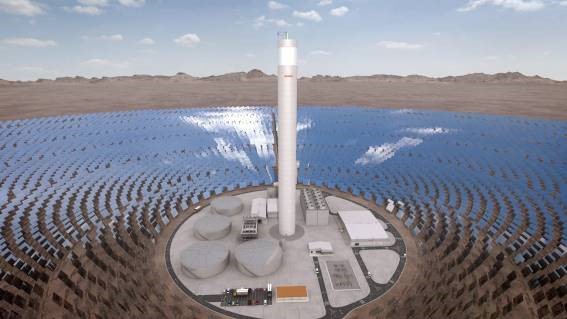In the US, three primary incentives have enabled the growth of STE:
The combination of these three incentives has led to the construction of five STE projects totalling over 1,300 MW. Each of the five projects were awarded loan guarantees that totalled US$ 5.84 billion.
By 2014, the primary incentives for STE projects were no longer available. Several states had just about reached their RPS goals, the loan guarantee programme was no longer funding utility-scale STE projects, and the long-lead time required to build solar thermal power plants made the ITC unavailable because the projects would have to be placed in service by the end of 2016. As a result, no projects started construction after the five that received loan guarantees. Those five became operational between 2013 and 2015.
Of the five projects, three were PT and two were CR. One of the troughs and one of the towers included thermal storage. Utilities, state energy regulators, and the financial community are evaluating the projects to determine if they operate as planned and produce the amount of power predicted. This is especially true for the solar tower projects, which are the first commercial towers operating in the US, and the two projects with storage, which are the first commercial STE projects in the US to using molten salt storage.
Several things are on the horizon that could impact the US market for STE:
[1] See, Energy Policy Act 2005.
Chile is one of the new emerging markets for STE, and Chile is one of the countries with the highest solar radiation in the world. At the moment, however, Chile’s electricity sector relies heavily on coal, diesel and gas.[1] Concerns related to economics, energy security and climate change have prompted the government to draw up a new energy policy, the “Estrategia Nacional de Energía” (ENE) 2012 -2030. The main goals of this policy are to generate 20% of the energy from clean energy source and to interconnect the SIC[2] and SING.[3] These aims could increase the capacity installed in the Chilean market and it could be an opportunity for supplying local mines with energy produced by STE technologies.
Due to Chile’s great solar conditions, STE is already competitive with conventional sources. Currently, the first solar thermal power plant in Chile is being developed within the Atacama-1 complex in Cerro Dominador. The project is a 110 MW solar thermal electric tower with 18 hours of thermal storage system in molten salts, allowing the plant to provide electricity 24 hours a day
[1] Source: CDEC-SIC/CDEC-SING y CNE
[2] Central Interconnected System (SIC) is comprised by 5 electric subsystems in the central area of Chile: from Quellón to the island of Chiloé
[3] Northern interconnected System (SING) supplies the north area of Chile, from Arica to Coloso. Mainly, its generation is based on gas and local mines.

The first solar thermal power plant in Chile is being developed with the Atacama-1 complex in Cerro Dominador. Photo: Abengoa |